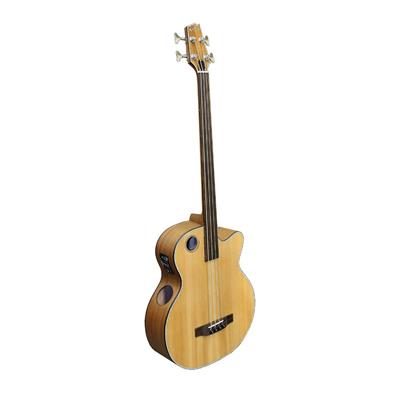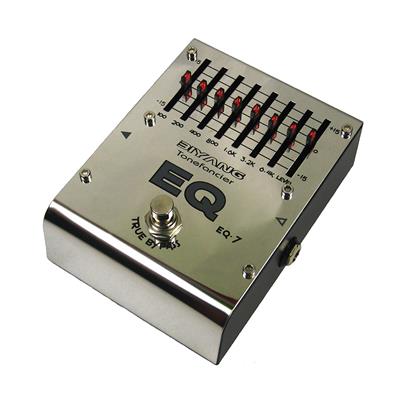Looking for the best beginner guitar amp? Our top picks include the Boss Katana-50 Gen 3 for versatility, Positive Grid Spark Mini for portability, and Orange Crush 20 for classic analog tone. All deliver professional sound quality without breaking your budget.
Why Every New Guitarist Needs the Right Amplifier
Congratulations on getting your first electric guitar! Whether you’ve been saving for months or just received that dream instrument as a gift, you’re probably eager to start creating music. However, there’s one crucial piece missing from your setup: a quality guitar amplifier.
Even the most expensive electric guitar sounds like little more than a whisper without proper amplification. The right beginner amp transforms your practice sessions from frustrating silence into inspiring musical moments that fuel your passion for playing.
What Makes a Great Beginner Guitar Amp?
Before diving into our recommendations, here’s what separates excellent beginner amps from the rest:
- Affordable pricing (typically under $300)
- Easy-to-use controls that don’t overwhelm newcomers
- Multiple tone options for exploring different musical styles
- Appropriate power for home practice (10-50 watts)
- Quality construction that withstands regular use
- Additional features like headphone outputs and recording capabilities
Best Guitar Amp for Beginners
| Image | Amplifier Model | ||
|---|---|---|---|
 | Positive Grid Spark MINI 10W Portable Smart Guitar Amp & Bluetooth Speaker |  (4.9 / 5) (4.9 / 5) | Check on Amazon |
 | Boss Katana-50 Gen 3 Combo Amplifier |  (4.8 / 5) (4.8 / 5) | Check on Amazon |
 | Blackstar IDCORE20V4 Combo Amplifier |  (4.7 / 5) (4.7 / 5) | Check on Amazon |
 | Fender Mustang GTX50 Guitar Amplifier |  (4.6 / 5) (4.6 / 5) | Check on Amazon |
 | Orange Crush 20 |  (4.5 / 5) (4.5 / 5) | Check on Amazon |
 | Fender Mustang LT25 Guitar Amp, 25-Watt Combo Amp |  (4.4 / 5) (4.4 / 5) | Check on Amazon |
1. Positive Grid Spark Mini – Best Portable Practice Amp
| Features: |  |
| Controls: |  |
| Sound: |  |
| Value: |  |
| Average: |  |

Price Range: $120-180 | Power: 10W | Rating: 4.9/5 ⭐
The Positive Grid Spark Mini revolutionizes practice with its compact design and powerful features. Despite weighing just over three pounds, this innovative amp delivers stereo sound through dual 2-inch speakers and includes 33 amp models plus 43 effects.
Key Features:
- Bluetooth connectivity for playing along with songs
- 8-hour battery life for practice anywhere
- USB-C recording at CD quality (16-bit/44.1kHz)
- Smart Jam Live feature with adaptive virtual drummer
- Companion app with extensive tone library
Pros:
- Compact stereo format with spacious and detailed sound.
- Numerous onboard amp models and effects.
- Access to more amp models and effects via the ToneCloud community.
- Bluetooth and USB audio for added versatility.
- Ideal for both practice and performance.
Cons:
- Not that much cheaper than the original.
- Only useful as a practice or recording amp.
2. Boss Katana-50 Gen 3 – Best Overall Value

Price Range: $229-300 | Power: 50W | Rating: 4.8/5 ⭐
The Boss Katana-50 Gen 3 consistently tops “best amplifier” lists, and for good reason. Boss has packed decades of effects expertise into this versatile combo amp, making it perfect for beginners ready to explore diverse musical styles.
Key Features:
- Five core amp voices: Acoustic, Clean, Crunch, Lead, and Brown
- Boss’s legendary effects library built-in
- Boss Tone Studio software for deep customization
- 12-inch speaker for full, rich sound
- Perfect for home practice and small gigs
Perfect For: Beginners who want professional versatility and plan to advance quickly.
Pros:
- Versatile Sound Selection: The amp comes with multiple amp voicings and built-in effects from Boss’s extensive library
- Great Value for Money
- User-Friendly Interface
Cons:
- 50-Watt Power Limitation: While sufficient for home practice and small gigs, the 50-watt power rating might not provide enough headroom for larger venues or outdoor performances where more volume is needed.
3. Blackstar ID:Core 20V4 – Best for Recording
| Features: |  |
| Controls: |  |
| Sound: |  |
| Value: |  |
| Average: |  |

Price Range: $149-169 | Power: 20W | Rating: 4.7/5 ⭐
The Blackstar ID:Core 20V4 stands out by including a built-in audio interface, making it perfect for beginners interested in recording. This feature-packed amp delivers professional sound while maintaining beginner-friendly operation.
Key Features:
- Built-in USB audio interface for direct recording
- Intuitive control layout perfect for beginners
- High-quality digital effects and amp modeling
- Compact 20-watt design ideal for home use
- Multiple input options for versatility
Perfect For: Beginners planning to record music or create content.
Pros: Cons:
4. Fender Mustang GTX50 – Best Smart Amp Features
| Features: |  |
| Controls: |  |
| Sound: |  |
| Value: |  |
| Average: |  |

Price Range: $320-400 | Power: 50W | Rating: 4.6/5 ⭐
The Fender Mustang GTX50 represents the latest evolution of Fender’s popular Mustang series, featuring expanded amp modeling and smart connectivity through the TONE 3.0 app.
Key Features:
- Over 20 amp models including Blues Jr, Vibro King, and Marshall classics
- TONE 3.0 app integration for wireless control
- Preset sharing with online community
- 50-watt power suitable for small gigs
- Modern connectivity options
Perfect For: Tech-savvy beginners who want cutting-edge features and future-proof performance.
Pros:
- Impressive Tonal Range: The expanded amp modeling selection covers everything from pristine cleans to high-gain territory, offering authentic recreations of both vintage and modern classics.
- Future-Proof Design: The 50-watt power rating means this amp can handle the transition from bedroom to stage, growing with the player’s needs.
- Smart Connectivity: The integration with Fender’s TONE 3.0 app and online community adds significant value through easy preset sharing and wireless control.
Cons:
- Volume Management: The 50-watt output might be challenging to tame in bedroom settings where ultra-quiet practice is needed.
- Learning Curve: While the amp is intuitive, mastering the full depth of its digital features and app integration takes time and patience to fully utilize.
- More expensive than other options
5. Orange Crush 20 – Best Analog Sound
| Features: |  |
| Controls: |  |
| Sound: |  |
| Value: |  |
| Average: |  |

Price Range: $160-230 | Power: 20W | Rating: 4.5/5 ⭐
For beginners who prefer simplicity and analog warmth, the Orange Crush 20 delivers classic tube-style tone through solid-state reliability. This amp focuses on two perfectly crafted channels rather than overwhelming digital options.
Key Features:
- All-analog circuitry for authentic tone
- Two-channel design: Clean and Dirty
- Simple, intuitive controls
- Orange’s signature construction quality
- 8-inch speaker with surprising depth
Perfect For: Players who want classic analog tone without digital complexity.
Pros: Cons:
6. Fender Mustang LT25 – Best Budget Option
| Features: |  |
| Controls: |  |
| Sound: |  |
| Value: |  |
| Average: |  |

Price Range: $120-150 | Power: 25W | Rating: 4.4/5 ⭐
The Fender Mustang LT25 proves that beginner amps don’t have to break the bank. This digital amp offers 30 amp models and effects in an affordable, easy-to-use package.
Key Features:
- 30 built-in amp models and effects
- Simple preset system for quick tone changes
- 8-inch speaker with solid projection
- Headphone output for silent practice
- USB connectivity for recording
Perfect For: Budget-conscious beginners who still want tone variety.
Pros:
- Incredible variety of tones from one compact box
- Super easy to use, even for tech-challenged players
- Headphone output for silent practice is a lifesaver
Cons:
- 25 watts might not cut it for band practice
- Some high-gain presets can get a bit fizzy
Guitar Amp Buying Guide for Beginners
Understanding Amplifier Types
Solid-State Amps
- Most reliable and affordable option for beginners
- Consistent performance with minimal maintenance
- Clean, precise sound reproduction
- Examples: Boss Katana series, Blackstar ID:Core
Tube Amps
- Warmer, more dynamic sound with natural compression
- Higher cost and maintenance requirements
- Preferred by professional musicians
- Generally not recommended for complete beginners
Digital/Modeling Amps
- Recreate multiple amp types through software
- Extensive effects and tone options
- Great value and versatility for learning
- Examples: Fender Mustang series, Positive Grid Spark
Hybrid Amps
- Combine tube preamp with solid-state power section
- Balance of tube warmth and solid-state reliability
- Mid-range pricing between solid-state and full tube
Choosing the Right Wattage
10-15 Watts: Perfect for apartment living and headphone practice
20-30 Watts: Ideal for home practice with occasional small group playing
40-50 Watts: Suitable for home practice and small venue performances
Essential Features for Beginners
Must-Have Features:
- Multiple channels (Clean and Dirty minimum)
- Headphone output for silent practice
- Auxiliary input for playing along with music
- Built-in tuner
- Basic tone controls (Bass, Mid, Treble)
Nice-to-Have Features:
- Built-in effects (reverb, delay, distortion)
- USB connectivity for recording
- Bluetooth capability
- Mobile app integration
- Multiple amp modeling options
Budget Considerations
Under $150: Basic practice amps with essential features
$150-250: Mid-range amps with effects and modeling
$250-350: Professional-grade beginner amps with advanced features
How Cabinet Construction Affects Your Tone
Just like tonewoods in acoustic guitars significantly impact sound quality, amplifier cabinet construction plays a crucial role in your overall tone. The wood type, thickness, and build quality all contribute to how your amp sounds and feels.
Cabinet Wood Types:
- Pine: Lightweight with bright, airy tone
- Birch: Dense and punchy with focused midrange
- MDF: Affordable and neutral, common in budget amps
Why Thickness Matters: Thicker cabinet walls reduce unwanted vibrations and produce tighter, more controlled bass response. This construction also improves durability and reduces the “boxy” sound common in cheaper amplifiers.
Frequently Asked Questions
Q: How loud should my first amp be? A: For home practice, 10-20 watts provides plenty of volume. If you plan to jam with friends or play small gigs, consider 30-50 watts.
Q: Do I need effects built into my amp? A: Built-in effects are convenient for beginners and save money compared to buying separate pedals. They’re perfect for exploring different sounds while learning.
Q: Can I use my guitar amp with other instruments? A: Most guitar amps work well with electric keyboards and drum machines. However, avoid using them with bass guitars, as this can damage the speakers.
Q: Should I buy online or in-store? A: While online offers better prices, testing amps in-store helps you find the right sound. Many stores will match online prices if you ask.
Final Recommendations
For Most Beginners: The Boss Katana-50 Gen 3 offers the best combination of quality, features, and value. Its versatility grows with your skills.
For Apartment Dwellers: The Positive Grid Spark Mini provides professional sound in an ultra-portable package with excellent practice features.
For Budget-Conscious Players: The Fender Mustang LT25 delivers impressive variety and quality at an unbeatable price point.
For Recording Enthusiasts: The Blackstar ID:Core 20V4 includes a built-in audio interface, eliminating the need for additional recording equipment.
For Purists: The Orange Crush 20 offers authentic analog tone without digital complexity, perfect for players who prefer simplicity.
Remember, the best amplifier is one that inspires you to pick up your guitar and play. Each amp on this list will serve you well as you begin your musical journey. Consider your budget, living situation, and musical goals when making your choice.
Start with any of these excellent options, and you’ll have a solid foundation for years of musical growth and enjoyment. Happy playing!






